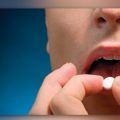Diabetes Is A Balancing Act
By Joy Pape, RN, BSN, CDE, WOCN
Your blood glucose level can change because of many things, such as the foods you eat, your activity level and the diabetes medicines you take. It’s a balancing act you can master when you learn to juggle these three things.
FOOD
Many foods cause blood glucose to rise. Some will cause your glucose level to rise more than others. For the most part, the foods you eat are made up of carbohydrates, proteins and fats.
➧ Carbs
Carbohydrate-based foods have the greatest effect on blood glucose levels. But many are good for you, so don’t stop eating carbohydrates altogether. Choose healthy ones, such as vegetables, fruits, beans, low-fat milk and yogurt and wholegrain products. Eat the amount that fits into your diabetes meal plan.
➧ Protein
Protein foods don’t cause blood glucose levels to rise as much as carbohydrates, but you need to balance your portions of these foods too. Some healthy protein foods are fish, lean meats, eggs, low-fat cheese and soy. How much should you eat? A good rule of thumb is for the protein part of your meal to be about the size of the palm of your hand.
➧ Fat
Fat alone won’t cause your blood glucose to rise, but fats have the most calories. Eating too much fat can cause you to gain weight and may raise your cholesterol (lipids). Also, there are healthy and less-healthy fats. Some healthy fats are nuts, oils (such as olive oil) and nut butters like peanut and almond butter. Fatty fish like salmon, sardines and mackerel are also good sources. For nuts, an ounce makes up a serving size. That is about 20 almonds or about 14 walnut halves.
To find out how many carbohydrates, proteins and fats are in a food, read the label, look in a food counter book or search the Internet. To see how eating a certain food or meal affects your blood glucose, check your blood right before you eat then two hours after you take your first bite.
MEDICINE
The medicines you take to lower your blood glucose work in different ways. Some help your body use the insulin it makes. Some slow down the amount of sugar your liver produces. Some show how quickly your food is absorbed and others push the pancreas to produce more insulin (if the beta cells of your pancreas are still able to do so).
Insulin helps glucose enter the cells of the body. If your physical activity is not balanced with the insulin or medicines you take to push the pancreas to make more insulin, your blood glucose level may drop too low. This may happen if you eat less than normal, skip a meal or are more active than usual. Talk with your health care provider and your pharmacist about the medicine you use. Ask what it does, when and how to take it and if it can cause you to have low blood glucose. Check your blood glucose often to see how you respond to your medicine.
PHYSICAL ACTIVITY
Physical activity or exercise can lower your blood glucose level. It may be as powerful as some diabetes medicines. You may notice that on the days you are more active, your blood glucose is lower. Physical activity can lower your glucose level right away or after you finish your activity. This effect can last up to 72 hours.
If you take medicines that lower your blood glucose, don’t exercise if your blood glucose is too low, as your activity may drop your glucose level even more. Find out how physical activity affects your blood glucose by checking it before you exercise, then several times during the next 24 hours.
THE BALANCING ACT
To find out how all you do works together, keep records of what you do and when you do it, along with your blood glucose levels. Note the foods you eat, the physical activities you do and the medicines you take. This will help you get the information you need to become an expert diabetes juggler.













